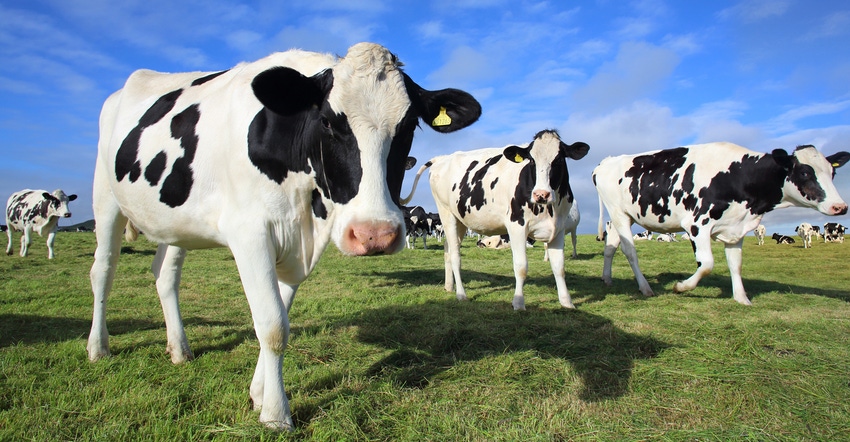
USDA opened sign-up for the Dairy Margin Coverage program and expanded the program to allow dairy farmers to better protect their operations by enrolling supplemental milk production.
The sign-up period, which started Dec. 13, runs through Feb. 18. The sign-up allows farmers to get coverage through this important safety-net program for another year, as well as get additional assistance through the new Supplemental DMC.
Supplemental DMC will provide $580 million to better help small and midsized dairy operations that have increased production over the years but were not able to enroll that additional production. Now, they will be able to receive payments retroactively for that supplemental production. Additionally, USDA’s Farm Service Agency updated how feed costs are calculated, which will make the program more reflective of actual dairy producer expenses.
According to Robert Bonnie, USDA undersecretary for farm production and conservation, catastrophic DMC coverage is free.
“Dairy Margin Coverage is a critical safety net for producers,” Bonnie says. “These DMC updates build on other efforts of the Biden-Harris administration to improve DMC and other key USDA dairy programs. We encourage dairy producers to make use of the support provided by enrolling in supplemental coverage and enroll in DMC for the 2022 program year.”
Small, midsize dairy benefit
Eligible dairy operations with fewer than 5 million pounds of established production history may enroll supplemental pounds based on a formula using 2019 actual milk marketings, which will result in additional payments. Producers will be required to provide FSA with their 2019 Milk Marketing Statement.
Supplemental DMC coverage is applicable to calendar years 2021, 2022 and 2023. Participating dairy operations with supplemental production may receive retroactive supplemental payments for 2021 in addition to payments based on their established production history, according to USDA.
Supplemental DMC will require a revision to a producer’s 2021 DMC contract and must occur before enrollment in DMC for the 2022 program year. Producers will be able to revise 2021 contracts and then apply for the 2022 program by contacting their local FSA office.
After making any revisions to 2021 DMC contracts for Supplemental DMC, producers can sign up for 2022 coverage. DMC provides eligible dairy producers with risk management coverage that pays producers when the difference between the price of milk and the cost of feed falls below a certain level. So far in 2021, DMC payments have triggered for January through October for more than $1 billion.
For DMC enrollment, producers must certify with FSA that the operation is commercially marketing milk, sign all required forms and pay a $100 administrative fee. The fee is waived for farmers who are considered limited resource, beginning, socially disadvantaged or a military veteran. To determine the appropriate level of DMC coverage for a specific dairy operation, farmers can use the online DMC Decision Tool.
USDA is also changing the DMC feed cost formula to better reflect the actual cost dairy farmers pay for high-quality alfalfa hay. FSA will calculate payments using 100% premium alfalfa hay rather than 50%. The amended feed cost formula will make DMC payments more reflective of actual dairy producer expenses.
Signing up for catastrophic DMC is a no-brainer — it is free. But farmers would be wise to sign up for the Supplemental DMC coverage as well. Do your homework. Use the DMC Decision Tool on the USDA website and see how much supplemental coverage will cost if you sell 5 million pounds of milk or less per year.
To learn more, contact your local FSA office.
About the Author(s)
You May Also Like






